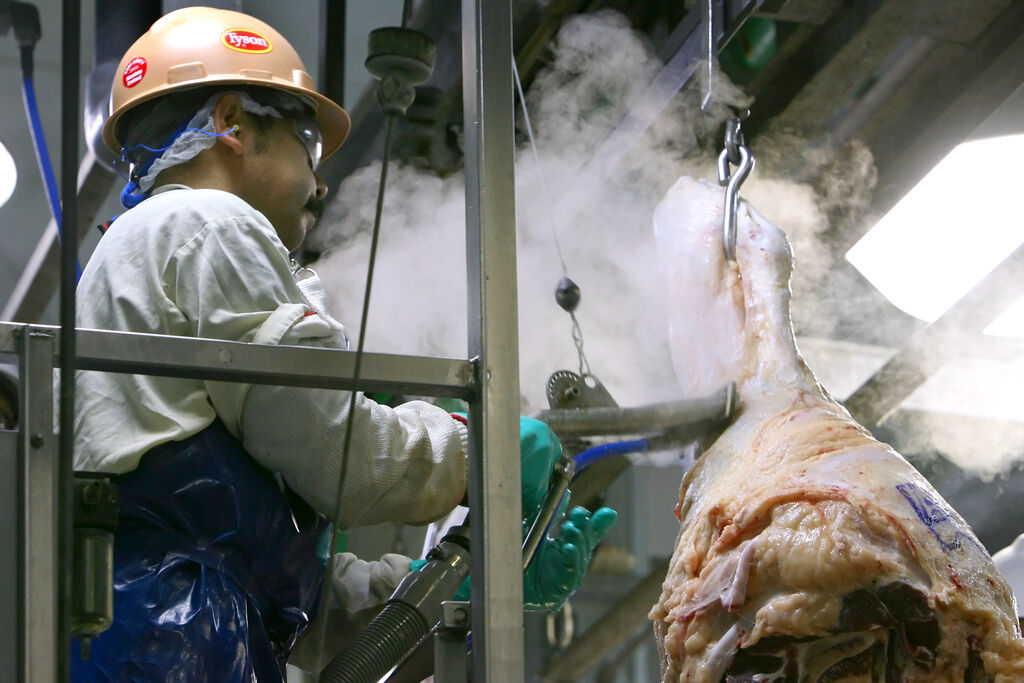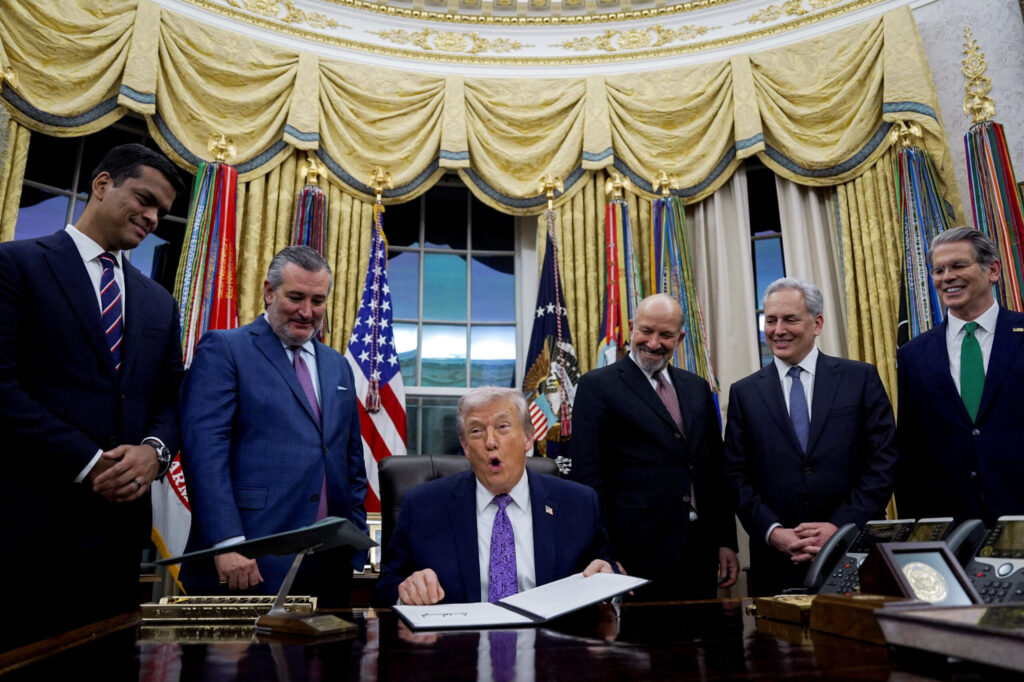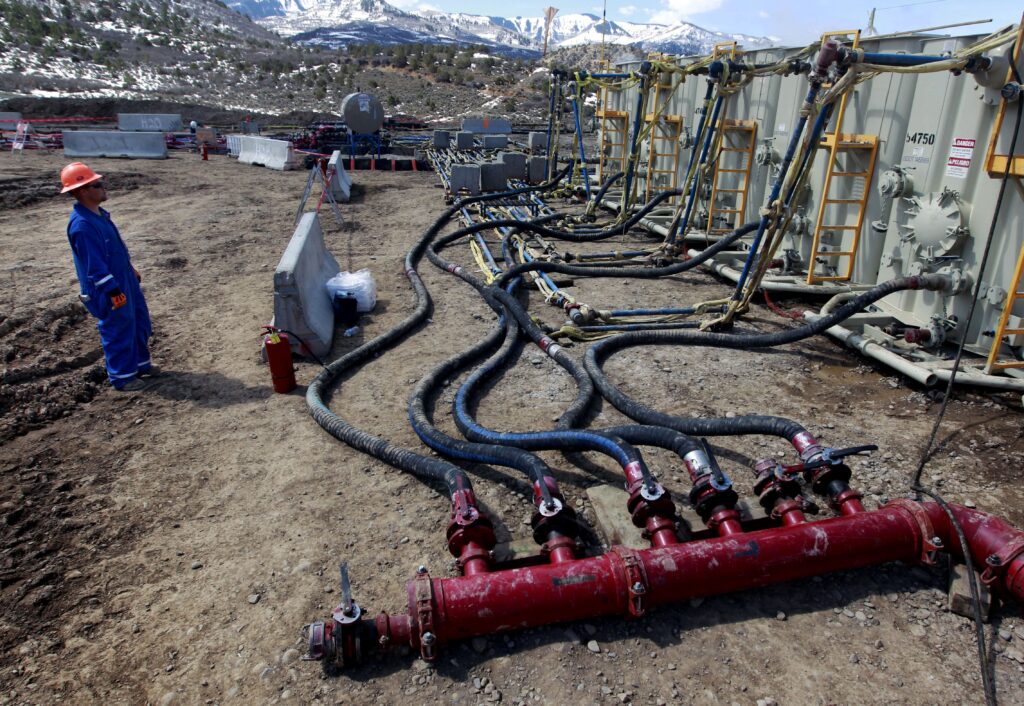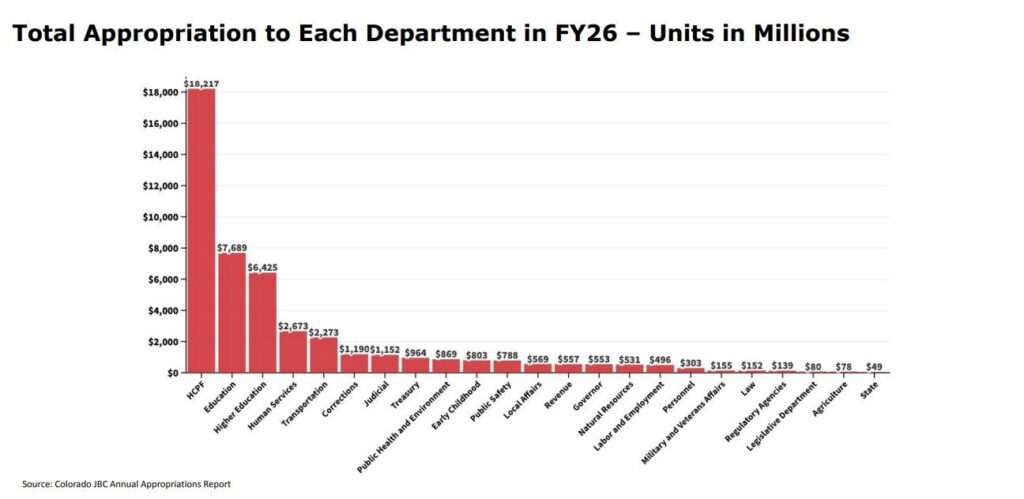Is it pricier to run a restaurant in Denver or NYC? Local owners don’t like the answer
During the height of the pandemic, restaurateur Delores Tronco left New York City to return to Colorado, her home state.
She didn’t have enough outdoor seating to generate the sales needed to stay in business and meet government-imposed COVID-19 protocols. And efforts to negotiate rent for her restaurant the Banty Rooster in New York City were unsuccessful.
At least in Denver, it would be cheaper to run a restaurant, according to a New York Magazine column on why she left the Big Apple in 2020.
Or so she thought.
Tronco, owner of Greenwich 2.0 on Larimer Street, said the cost of running a restaurant in Denver is quickly exceeding her expectations.
“It’s been shocking to realize just how much higher the costs in Denver are for operating than they are in New York City,” she said. “The one exception would be rent. It is the only exception, in fact.”
Running a restaurant in Denver has started to add up to levels seen in big cities like New York — one of the most coveted and priciest destinations to open a food business — a handful of restaurant owners and a hospitality investor told The Denver Gazette.

Delores Tronco, owner of The Greenwich in Denver’s RiNo neighborhood on Friday, Feb. 28, 2025. (Stephen Swofford, Denver Gazette)
Costs can be high as long as there’s enough customers to cover them. But Denver is a smaller city, they said, and the local market isn’t big enough like New York City to be sustainable.
One of the largest costs they attribute the problem to is Denver’s higher minimum wage for tipped workers, which has spurred some Democrat state lawmakers on Capitol Hill to push legislating lowering the pay for tipped workers in places where a local government’s minimum wage sits higher than what the state imposes. Owners who spoke out in support of the bill have faced calls for a boycott.
The restaurant owners have argued the proposal is needed in order to offset the rising costs associated with running their businesses, while workers said it unfairly reduces their wages and forces them to become even more reliant on unpredictable tips.
Denver’s minimum wage for restaurant workers is $15.79 plus tips. Compared to New York City, tipped food servers make $11 an hour. Colorado’s threshold for tipped employees is $11.79 per hour, but the state permits local governments to establish minimum wages above that threshold.
For Tronco, the rising minimum wage led to laying off staff.
Her restaurant no longer employs bussers or hosts, she said. They’ve cut a manager position, a morning dishwasher and a cleaning service to make ends meet, putting more responsibilities onto the servers and chefs to cover the missing roles.
Tronco said on top of administrative work, she works on the floor several days a week, and it’s taking away time for her to network and attract events that could help her restaurant grow.
It’s not sustainable, she said.
“It’s just really changed the face of what we do,” Tronco said. “And ultimately, it’s more work for fewer people.”

Alex Caffery, a bartender at The Greenwich, makes an old fashioned for a customer during a shift in Denver’s RiNo neighborhood on Friday, Feb. 28, 2025. (Stephen Swofford, Denver Gazette)
A growing food scene on ‘pause’
During the late 2010s, Denver was among the “holy trinity” of up-and-coming cities in the restaurant world on par with Nashville and Austin, a local restaurant investor said.
Julian Hitchcock, the founder of The F+B Group, a broker and consultancy firm specializing in restaurant real estate deals in New York and Colorado, said when he returned to the state in 2018, Denver was in an era of growth.
But since the city tied its minimum wage to inflation in 2019, Hitchcock said he’s watched many pending deals to bring out–of-state chefs from major cities to Denver fall apart.
“That’s a deal breaker for any restaurateurs who’s not in this market,” Hitchcock said. “They’re not coming.”
Denver’s food scene is essentially on “pause,” he said.
The minimum wage for tipped workers in Denver increased 60% since 2020. After five years of increases, Hitchcock said, restaurants are at a breaking point.
Most restaurants divvy up their costs by having rent make up about a tenth of sales, he explained. About a third of costs goes toward food and drink, and another third accounts for labor.
“When you only had a 15% margin, and your labor went from 35% to 50%, you’re out,” Hitchcock said.
Fine dining restaurants, where menu prices are highest, are most likely to afford the increasing costs, he said. On the other side of the spectrum, “iPad restaurants” with computerized service and fewer employees will also have a better chance of staying open.
“Everything in the middle of that is getting squeezed,” Hitchcock said.
For the restaurants that hung on and found a way to make the higher costs work, he added it’s only going to get harder to survive each year if the wage keeps rising.
And while the problem is exasperated in Denver, which has the highest wage in the state, he added, restaurants in Boulder will catch up soon.
The Colorado Restaurant Association cites data from the Denver Department of Excise and Licenses showing the number of retail food licenses in the city fell 24% since 2023.
But the department cautions against using the data, saying the city overhauled its food licensing process in 2023, there’s a lag in licenses expiring and licenses don’t show whether a business is struggling, thriving or even open yet. Licensing data shouldn’t be used as a sole economic indicator for the state of the industry, a department spokesperson said.
Restaurant owners are also dealing with high inflation for ingredient costs, pushing menu prices up.
While Denver’s overall inflation stabilized in 2024, not all goods have returned back to earth. The cost of food away from home — the category tracking eating out — has stayed stubbornly high.
!function(){“use strict”;window.addEventListener(“message”,(function(a){if(void 0!==a.data[“datawrapper-height”]){var e=document.querySelectorAll(“iframe”);for(var t in a.data[“datawrapper-height”])for(var r=0;r<e.length;r++)if(e[r].contentWindow===a.source){var i=a.data["datawrapper-height"][t]+"px";e[r].style.height=i}}}))}();
The cost of eating out in the metro Denver area surged nearly 40% over the last five years, according to federal data.
In downtown, several notable restaurants also penned a letter last month to Mayor Mike Johnston asking him to do more for the city core, as they’re struggling with the years-long 16th Street Mall construction project and the pandemic spurring a trend of emptier office buildings, as well as higher crime and drug use.
‘Going backwards’
Not everyone agrees the local restaurant industry is struggling. Critics find the effort to revert the minimum wage as a concerning precedent that would harm workers.
House Bill 1208 would amend Colorado’s tipping statute to allow local governments to set minimum wages above the state threshold — but they must provide a tip offset.
Local governments with minimum wages above the state’s $11.79 per hour for tipped employees — currently Denver, Boulder, and Edgewater — would be required to impose tip offsets equal to $3.02, plus the difference between the local and the state’s minimum wage amounts.
In Denver, the bill, sponsored by Denver Democratic Reps. Steven Woodrow and Alex Valdez and Sen. Judy Amabile, D-Denver, would lower restaurant workers’ minimum wage by $4 an hour, according to a fiscal analysis.
“Denver is actually behind many neighboring states and cities,” said Saru Jayaraman, president of One Fair Wage, an advocacy group that supports ending tipped wages for restaurant workers and getting them up to minimum wage.
!function(){“use strict”;window.addEventListener(“message”,(function(a){if(void 0!==a.data[“datawrapper-height”]){var e=document.querySelectorAll(“iframe”);for(var t in a.data[“datawrapper-height”])for(var r=0;r<e.length;r++)if(e[r].contentWindow===a.source){var i=a.data["datawrapper-height"][t]+"px";e[r].style.height=i}}}))}();
The proposed legislation to require cities like Denver and Boulder to have lower tipped wages is “extremely regressive,” she said, especially during an affordability crisis.
In California, the minimum wage is $16.50 and servers and bartenders have to be paid as much as anyone else. And more cities and states are following suit, she said.
“Colorado is the only place anywhere that’s talking about going backwards for these workers rather than forward,” Jayaraman said.
If Denver has to revert its minimum wage for restaurant workers, she said the workers would be the ones to face the brunt of it. As for arguments by the restaurant industry that say a higher wage for servers will lead to lower wages for back of house staff, Jayaraman said it isn’t true if restaurants choose to pay all their workers fairly.
“The equitable solution is to pay everybody a full minimum wage so that tips can legally be shared among front and back,” she said.
Sponsor: Without changes, restaurants will leave Denver or shutter altogether
Sponsors said the bill aims to address the unintended consequences of a 2019 law that allowed local governments to establish minimum wages above the state threshold. Critics said it cuts wages at a time of soaring expenses for workers.
While the law was well-intentioned, Woodrow said it has seriously strained the restaurant industry.
More than 200 restaurants closed across Colorado last year. Some 20,000 restaurant workers in Denver lost their jobs in the previous three years, as 22% of the city’s restaurants had shut down.
As a former restaurant worker, Woodrow said he understands how difficult service work is and believes all tipped employees deserve to make a livable wage. However, he said, the Colorado General Assembly’s actions six years ago have disproportionately harmed restaurant owners.
“What I’m really afraid of is that we’re entering a cycle, and that we’re gonna see restaurants continue to choose to leave the Denver city limits for other cities, or worse yet, just pull up stakes and call it quits,” he said. “We don’t want that. We want to have a thriving restaurant scene because that is how we have a thriving workforce.”

Pizza at the Greenwich in Denver’s RiNo neighborhood on Friday, Feb. 28, 2025. (Stephen Swofford, Denver Gazette)
Looking outside of Denver
One local restaurant entrepreneur said the local minimum wage is making it difficult to expand locally.
Juan Padró is CEO of the Culinary Creative Group, which operates several award-winning restaurants in Denver such as Ash’Kara, Mister Oso, Bar Dough, Fox and the Hen and more. Padró said he believes the restaurant bill will offer relief for restaurants.
“We’re looking out of state … you want to do as much as you can where you live in your home, which is Denver for me, but the economics are pretty challenging in Denver right now,” Padró said.
Several months ago, he examined several other cities suitable for expansions, such as Houston, New Orleans and New York City.
This restaurant owner was wondering what his profit margins would look like if he parachuted his Denver restaurants into another city. He kept all expenses the same and only changed the costs to 2024 minimum wages.
Some costs such as rent, food and licenses do vary by city, but labor is the biggest differentiator of cost. It’s by no means a perfect analysis, Padró said, but it’s the kind he uses to make his decisions on where to expand.
What Padró found was that he could make a far better profit elsewhere.
“Denver is about as expensive as the coastal cities, if not more than a lot of them right now,” he said.
!function(){“use strict”;window.addEventListener(“message”,(function(a){if(void 0!==a.data[“datawrapper-height”]){var e=document.querySelectorAll(“iframe”);for(var t in a.data[“datawrapper-height”])for(var r=0;r<e.length;r++)if(e[r].contentWindow===a.source){var i=a.data["datawrapper-height"][t]+"px";e[r].style.height=i}}}))}();
In Houston, Nashville and New Orleans, his restaurants’ profit margins could be more than 18%. New York City’s showed about 6% profits. In Denver, it wasn’t even half-a-percentage.
Compared to Colorado, where the state minimum wage is lower at $11.79, the restaurants would make nearly 6%.
Padró said he is considering opening a restaurant in New York City’s West Village that had a similar size and slightly higher rent than Bar Dough in the Lower Highlands neighborhood. It could have made more sales due to its location in one of the world’s biggest cities.
“Part of it is labor costs. Part of it also is Denver is a mid-sized city,” Padró said. “It’s not New York. It’s not L.A. It’s not Miami, Chicago, Dallas, right? We don’t have the density.”
The labor expenses across the country can make a difference of either $2 million profit in a city like Houston to put into growing the business and hiring more workers or about $40,000 in Denver, which wouldn’t be enough to add one more employee.
Padró ended up passing on the New York City restaurant because his priority is surviving in Denver, he said.
“We were very much in expansion mode, and we have some serious concerns and we want to make sure that we’re doing everything to keep our businesses open and thriving in the city of Denver, where we’re home,” Padró said.
He did add they’re still in deep talks to expand into Houston, though.
Reporter Marissa Ventrelli contributed to this story.











